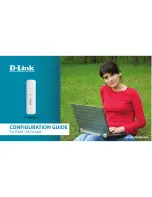
www.agelectronica.com www.agelectronica.com
www.agelectronica.com www.agelectronica.com
Enfora Enabler IIIG M2M
Modem Integration Guide
GOOD RF thermal relief
Figure 3 - Example of a GOOD RF Thermal Relief
4.6.1.3. Antenna and RF Signal Trace
The PCB trace that feeds the RF output port must be designed for a 50 ohm characteristic
impedance, coplanar, or routed into internal layers to keep the top layer continuous around
and underneath the Enabler module. Ample ground vias should be provided around the RF
contacts, the RF trace and launch pad. If possible, keep I/O and power traces away from the
RF port. This includes traces running parallel or orthogonal to it. Thermal relief should not
be used on the antenna output port ground pads. The designer must pay close attention to
the size of the pad and thickness of the dielectric beneath the signal pad and trace. Most
PCB manufacturers can adjust the trace width to maintain 50 ohms impedance if the traces
are identified and instructions are included on the FAB drawing. This service is typically
provided at no or minimal additional cost.
For minimum RF emissions due to the fundamental frequency of operation, the Enabler
module works best with an antenna load that has a VSWR of 1.5:1 or better. The antenna
should not have gain at the harmonic frequencies, otherwise, the conducted harmonics could
get amplified to a point where the product no longer passes type approval. However, for
applications where antenna quality is less than ideal, it is recommended to have a low pass
filter (Pi structure with N=3) in the RF path to the antenna. This is a secondary plan should
there be a need to lower harmonic levels at frequencies above the PCS band. The pad
structure may also be used to match the antenna load impedance, if required. If it is not
needed, a capacitor of low reactance may be used to bridge the Pi structure.
The RF cable going between the Enable module and the antenna is very lossy, therefore, the
length of this cable should be kept as short a possible.
GSM0308IG002
17
Version 1.05 – 11/13/08
















































